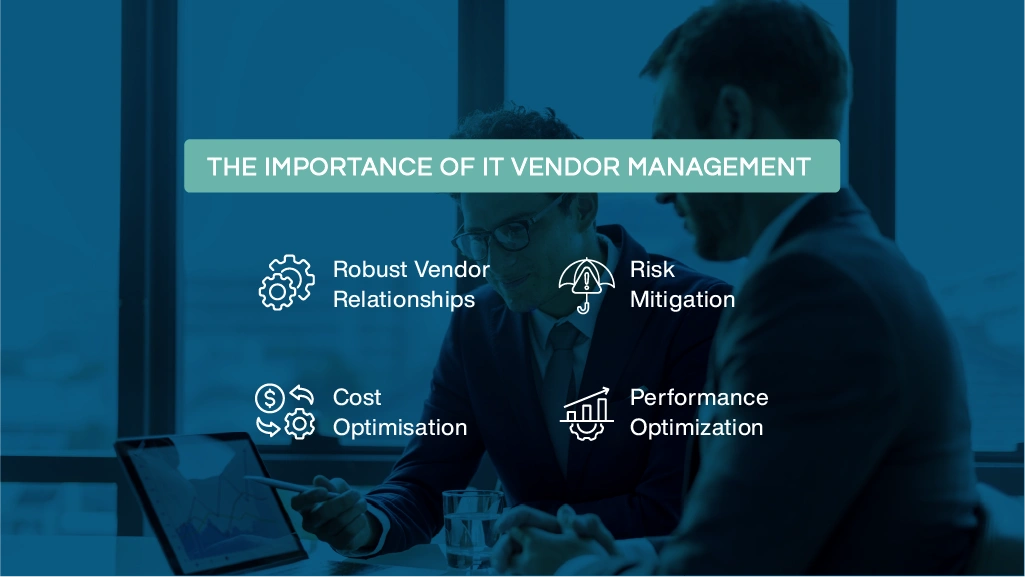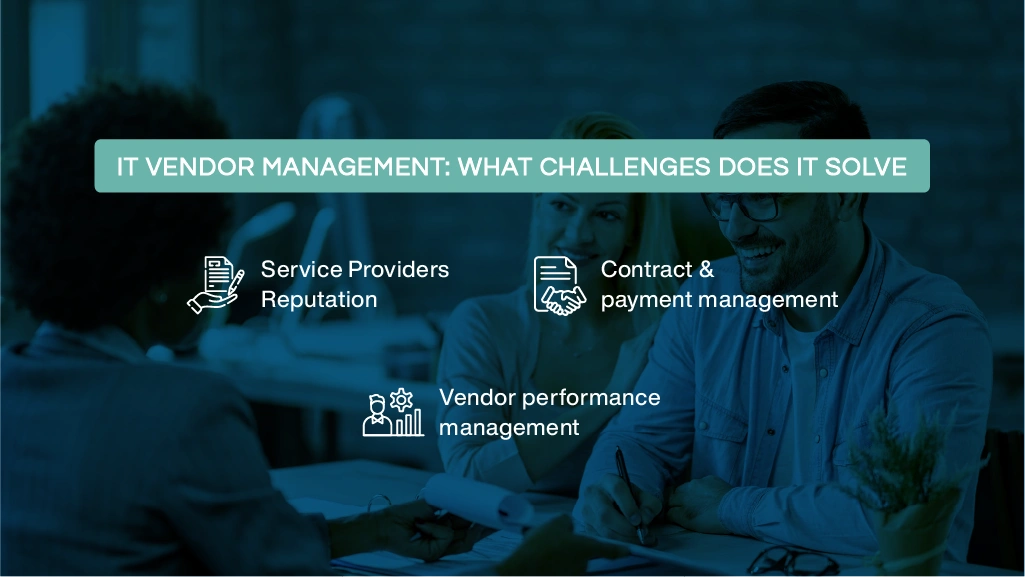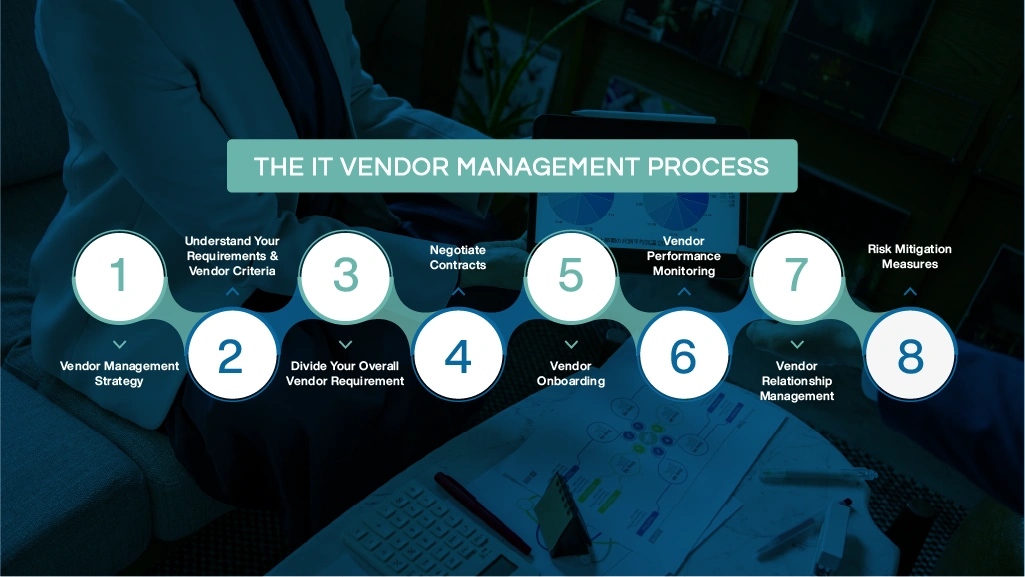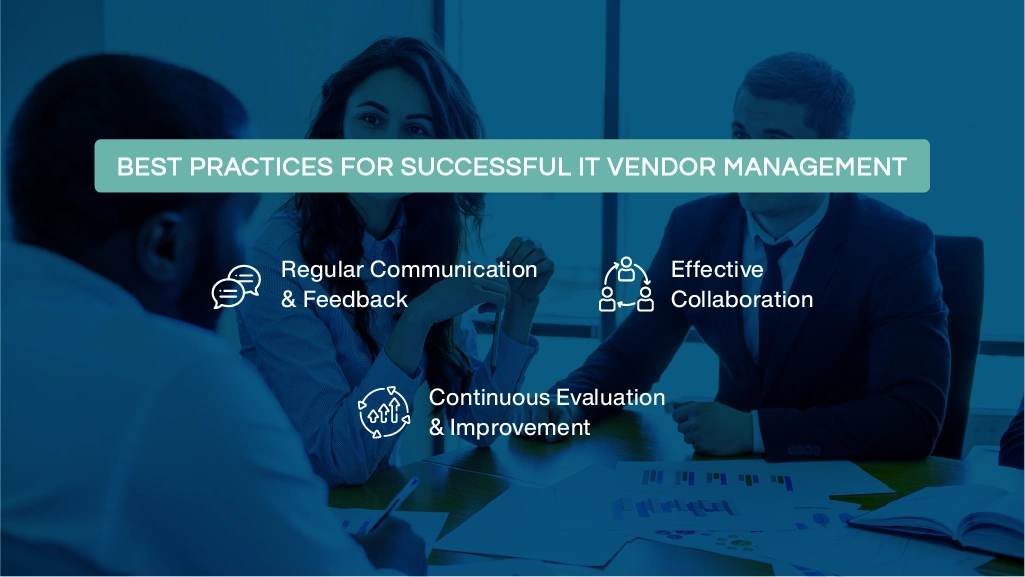
Outsourcing is a common practice in the IT industry. Many companies, big and small, rely on some type of IT outsourcing service. However, not all invest in a smart strategy to manage the IT vendors. This usually impacts the results.
Vendors are a crucial part of every organisation. They enable you to perform business functions smoothly and efficiently. In many businesses, it is the heart of their functionality. However, not every organisation can manage these vendors in an effective way. The world of IT outsourcing vendors is no different.
According to Statista, the market volume for IT outsourcing can reach US$777.70bn by 2028, with an annual growth rate in revenue.
IT vendor management is a complex process that includes a lot of aspects like maintaining relationships with IT vendors, expectation management, responsibilities setting, evaluation of work, and doing it all within the budget range.
Let’s understand IT vendor management in depth.
Table of contents
- Understanding IT Vendor Management
- Significance of IT Vendor Management
- Challenges To Vendor Management
- Process of IT Vendor Management
- Best Practices in IT Vendor Management
IT Vendor Management
Vendors can be individuals or businesses who provide goods and services to your business. In nearly all cases, your company works with many different vendors, each with a different pay rate, contract term, and point of contact.
Managing all this is complex. Hence, the need for effective vendor management arises.
IT vendor management is a comprehensive term that encompasses all the processes and systems that are used by organisations to manage their vendors effectively and efficiently. This term includes all the activities, including policies for technology solutions.
IT vendor management, therefore, refers to centralising all details and streamlining communication with the vendors.
The Importance of IT Vendor Management

Proper IT vendor management results in organisational efficiency and improved performance. Therefore, managing IT vendors is crucial for every organisation. Let’s understand the significance.
- Robust Vendor Relationships
With a seamless IT vendor management process, you build stable vendor relationships. With the help of an efficient vendor management process, clear expectations and responsibilities are set, which further help in the proper evaluation of the performance and indirectly aid in managing budgets effectively.
The overall impact of this results in robust and collaborative relationships with the vendor, which then positively impacts overall business operations.
- Risk mitigation
Even IT outsourcing involves a certain degree of risk. With a seamless vendor management process, you can minimise these risks. When you have a comprehensive plan in place, you have a list of multiple activities that can help you reduce the risks.
You can conduct background checks to evaluate each and every vendor’s work, skills, and past performance to ensure that you select vendors that fit your requirements perfectly. With the help of a plan like this, you can minimise the chance of failure or bad performance. Poor performance has a negative impact on business operations and financials.
- Cost Optimisation
It is a significant benefit of efficient IT vendor management. Every organisation has multiple vendors for multiple tasks. Managing these multiple vendors and their contracts is both a complex and time-consuming process.
A proper vendor management system can simplify all of these complex tasks. This speeds up the decision-making process. All the vendor-related data is centralised and easily traceable. Time saved is money saved. With this time-space, you get a chance to identify space for saving costs and have the upper hand at negotiating deals that directly impact your bottom line.
- Performance Optimization
In order to evaluate the performance of every supplier, you need a system that can help you track these. Once you have a proper vendor management process and system in place, you can track and measure their performance against the promises of service in the contract.
This will help you understand the actual performance of the vendor and help you create reports that ensure proper monitoring is done on every task performed. The insights from this can help you in keeping track of performance and gaps. This will show you the problem areas and the spaces where the vendor is not performing up to the organisational requirements.
This can be used to direct the vendor into delivering on their promises and help in optimising the overall performance.
IT vendor management can help your business in excelling at getting the best out of IT outsourcing efforts.
IT Vendor Management: What Challenges Does It Solve

- Service Providers Reputation
Handling multiple vendors at once is challenging, as not all vendors perform equally well. Other than their performance, verifying their backgrounds and assessing their skill and experience before approving a contract or making any confirmed decisions is essential. Overall, the work quality of each vendor should be checked before commencing any project.
If a vendor does not meet the specified requirements, it could prove to be damaging in the long run. If proper vendor management is not done, your company will sustain damage as you already have entered into a partnership. If the process is not defined, the service provider’s reputation cannot be accessed against the company’s needs, directly impacting the bottom line.
- Contract and payment management
Managing all their contractual obligations can be difficult if a company is working with several IT vendors. It is essential to ensure timely payments are made to avoid issues/project bumpers. Failure to manage these payments can also lead to businesses getting stuck with a vendor who is not performing in the way that they need them to.
In fact, if you do not have a proper vendor management system, you will always go up and down on contracts and payments. Many times, you are stuck with an underperforming vendor because of automatic contract renewal. You can easily bypass all these challenges with an efficient IT vendor management system.
- Vendor performance management
Organisations must overview the IT vendor’s performance and ensure that they are delivering on their KPIs. This can be challenging when companies are working with multiple vendors at the same time. It is, therefore, essential to have performance metrics that can monitor the progress regularly. In the case of not having these companies miss issues until it’s too late to rectify.
Without a proper IT vendor management system, you will be lost in tracking all these metrics. You will have a centralised system of comparing service provider’s performance and will have the upper hand in negotiating for future services.
Overall, managing vendors is a complex process. Companies must ensure the necessary steps are taken to mitigate the risks when engaging with vendors. Setting clear expectations, defining responsibilities, evaluating vendor performance, managing budgets, and fostering better vendor relationships is essential.
By creating a plan to manage IT vendors throughout their lifecycle and regularly reviewing and improving vendor management systems, companies can reduce these risks and ensure the success of their IT outsourcing initiatives.
The IT Vendor Management Process
IT vendor management process involves two major tasks:
- Selecting IT vendors as per business requirements
- Vendor relationship management
These two main areas include multiple smaller functions like creating a supplier policy, dividing suppliers into categories, making contracts, monitoring supplier performance, and more.
A proper IT supplier management process will ensure that vendor relationships are robust and your outsourcing endeavour is successful. Let’s understand the IT vendor management in detail.

Step 1: Vendor Management Strategy
The vendor management strategy starts with your business goals and objectives. If your strategy is not clear, everything ahead will be haphazard. In order to build a good vendor management strategy, you need to determine your primary focus areas: safety costs, service quality innovation, technical upgradation or even managing current market trends. It is crucial to define core focus areas and finalise your management strategy’s base.
Step 2: Understand Your Requirements & Vendor Criteria
This part of the strategy involves identifying specific services, the budget, and other critical factors that will impact your decision. Once you have identified your requirements, the next is using them to create vendor selection criteria.
You need to identify all the potential vendors with the IT services that match your requirements. The next part is assessing their experience, market name, and their stability. A few more things that you need to take into consideration are:
- Look for service providers who have similar successful projects.
- Get more details about them through their websites, reviews (both employee and clients), their professional recognitions, etc.
- Contact these firms to get more details on their pricing plans, experience, certificates, and security measures and if they are available for your project.
- Define your project timeline and the timeline that the service provider is submitting.
- Get a trial period to understand if they can perform your tasks.
Step 3: Divide Your Overall Vendor Requirement
Vendors can be categorised based on multiple factors, some of which are the type, the impact, and the service. When you divide your overall requirements, you can divide the amount of time and effort that would go into managing them. This also helps you in managing your vendor relationships. Moreover, your requirements can easily align with these service providers. One example of dividing the vendors can be:
- service providers under the senior team
- service provider under middle management
- service provider divided by the department of the services
Step 4: Negotiate Contracts
It is essential to avoid any legal disputes that may arise when expectations are not adequately defined in the contract. You need to review the contract, negotiate terms, and define expectations to ensure that both parties are on the same page.
Step 5: Vendor Onboarding
At this stage, you gather all the information and documents from your vendors. This also includes collecting information like payment terms, licenses, tax forms, and more.
We suggest that the payment terms align with your budget. Assigning a point of contact (POC) from your managers is known to help this relationship. These people will ensure that the IT vendor delivers on their promises at all stages.
Step 6: Vendor performance monitoring
At this step, you track and evaluate the service provider’s performance against the contract terms and requirements. This involves monitoring the key performance indicators (KPIs). These can be project timelines, service quality, cost savings, growth in tech, etc.
Step 7: Vendor Relationship Management
Maintaining your outsourcing partnership is one of the most important parts of this entire process. You must nurture all communication channels and ensure that a constant feedback system is in place. With both these systems, conflict management becomes easy.
This process involves constant discussion on the performance, to and fro feedback, and effective collaboration, which impacts the quality of service.
Step 8: Risk Mitigation Measures
While this step comes in at last, it begins when selecting a vendor. At this stage, you need to ensure that you cover all potential risks and have ensured that your IT vendor complies with all the rules and regulations, has no history of lawsuits, and understands data privacy at its core. You also need to manage this risk by ensuring that there is a proper modus operandi in case an emergency problem arises.
Remember, the IT vendor management process is not a one-time exercise but a continuous one. As a result, you need to evaluate and improve your process regularly to ensure that it aligns with your business goals.
Best Practices for Successful IT Vendor Management

Managing IT vendors is essential for optimising business performance. Companies should adopt best practices to achieve a successful IT vendor management process. Some of these practices we suggest are:
- Regular Communication & Feedback
Building a solid relationship with IT vendors requires regular communication and feedback. It is crucial to have proper channels for communication, which include communication methods for virtual meetings, performance reviews, and even regular status updates.
Regular feedback can help IT vendors in easing the process of adapting to your company’s requirements. This ensures that they can align with your requirements.
- Effective Collaboration
There is no managing IT vendors without a good collaboration plan. Any effective IT vendor management process requires a balance between service providers and the teams. Collaboration can promote easy conflict resolution. Effective collaboration will ensure that your vendors meet your project requirements.
- Continuous Evaluation and Improvement
An efficient IT vendor management process needs continuous evaluation and improvement. The evaluation focuses on vendor performance and involves activities like analysing procurement costs, quality, service level agreements(SLAs), and even compliance.
Companies should look for opportunities to improve the quality of work of their vendors. Regular evaluation of the performance can aid in reducing costs, minimising risk, and increasing the efficiency of the overall equation.
Conclusion
A successful IT vendor management process ensures that one can get the best out of outsourced IT services. From defining vendor requirements to fostering strong vendor relationships, the IT vendor management process can be a crucial resource for any company.
By implementing best practices such as communication, collaboration, and evaluation, companies can optimise all the challenges faced by any company with vendors. With the help of multiple vendor management tools like VMS ERP, companies can streamline this process and grow. Want to guarantee the success of your outsourcing endeavor? Start developing a robust IT vendor management strategy today!
Get IT Outsourcing Services
Outsourcing your IT consulting services to a reputed provider will help your business gain more heights. An IT consultant will not only save costs, but also improve your functionality, help you in situations of crisis, & help you build a better team for the future. PatternBots has been helping many businesses in similar domains by providing our optimized tech solutions. If you are also looking for one, contact us and we will get back to you.